 | ||
The first glimpses of the Palace of Versailles from the tour bus.
|
 |
| This display shows the layout of the palace and grounds. The bottom left if the King's stables while the matching one on the right is the Queen's Stables. |
 |
| The Avenue de Paris runs straight from the gates of the Palace so visitors arriving from Paris got the full effect of the grandeur of the buildings. |
 |
| The gate was quite ornate and very showy. |
 | ||
We entered the complex at the building to the left of the chapel where you can see the B sign
|
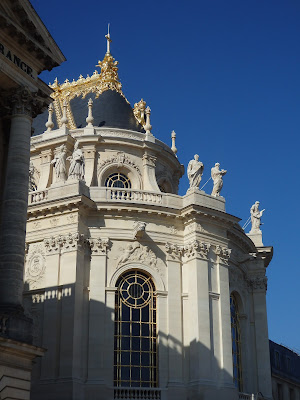 |
| The Chapel was also quite ornate and it was higher than the rest of the Palace. |
 |
| The tour of the Palace was all on the second floor so we had to enter this hall and walk up the stairs. |
 |
| What an interesting light fixture! |
 |
| The Hercules Drawing Room. Every room of the Palace is decorated to show the might and prosperity of the empire. |
 |
| From the Hercules Drawing Room we could look into the Chapel. |
 |
| But we weren't allowed too close. |
 |
| What fantastic painted ceilings! Every square inch of each room was highly decorated. |
 |
| On to the next room. You will have to double click to read. |
 |
| Yes green velvet wallpaper. I believe the guide mentioned that the decorations were changed out twice a year while King Louis XIV reigned. |
 |
| The Mercury Room |
 |
| The Apollo Drawing Room |
 |
| The War Drawing Room |
 |
| Looking out the windows of the War Drawing Room, we could see some of the many fountains and some of the gardens. |
 |
| The bed canopy is hard to distinguish in this photo as it blends in with the gold accents on the ceiling. |
 |
| The State Cabinet Room. |
 |
| Antichamber of the Large Canopy |
 |
| The Guard Room |
 |
| The Coronation Room. The Pillar in the middle of the room made it hard to get a photo of the Coronation picture. |
 |
| Busts seen while heading down the Queen's Staircase to exit the building |
 |
| Center portion of the Palace with the Queen's Chambers on the left, the King's Chambers and Hall of Mirrors in the middle and the Drawing Rooms on the right. |
 |
| Then we headed out to the back of the building. |
 |
| Roof statuary |
 |
| You might know that palm trees are not native to France. |
 |
| The orangery where they grew fruit trees |











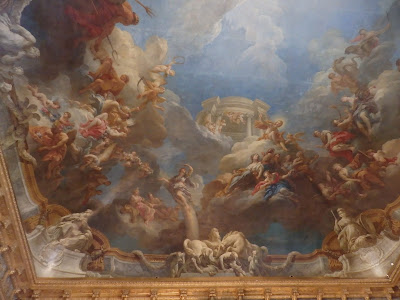

























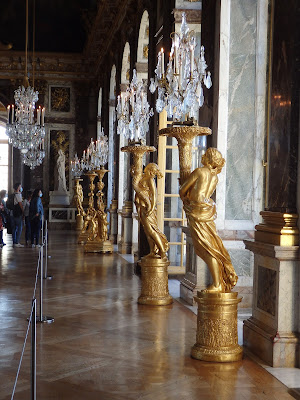



































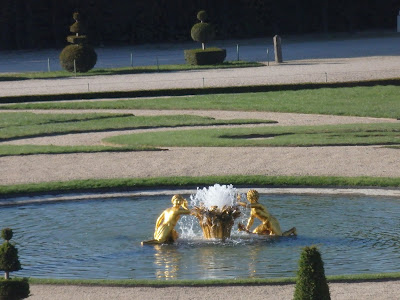

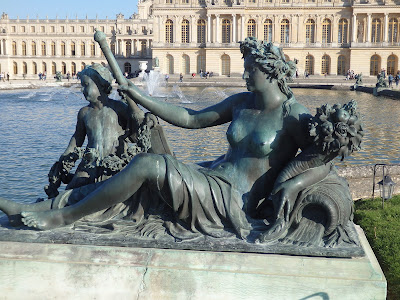


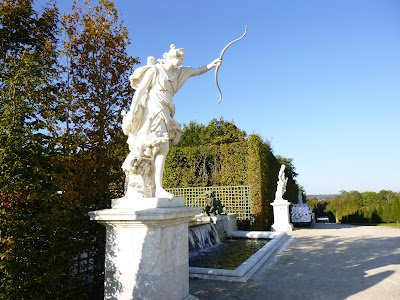
No comments:
Post a Comment